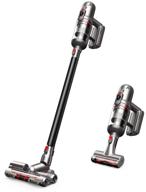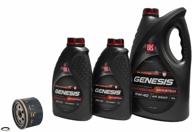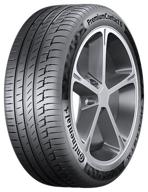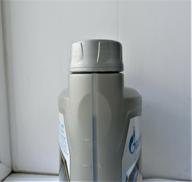
Review on 🔧 ACDelco GM Original Equipment 187 Degree Engine Coolant Thermostat with Seal (Part Number 131-160) by Walter Day

Fits Tahoe 5.3 2014
It came and was supposed to be a genuine GM part. It's hard to tell as you can get any number of different types of packaging that technically fall under the GM brand (yes, Delco is GM). The 5.3 Vortec in my Tahoe (like the Silverado 1500, Avalanche, GMC, and some other models) requires that specific temperature, 187F (the thermostat itself says it's 86C, which isn't exactly the same, but close enough). My Tahoe was easier to swap out than my old Jeep. On my model, the radiator doesn't have a faucet at the bottom to turn and drain the water. You will need to remove the end panel under the engine compartment below where you are looking down. It is a plastic piece held down by 4.15mm. Unscrew, then squeeze the clamp on the lower radiator hose to dislodge it from the edge of the case inside the hose and drain it all from there. Place *several* pallets under this area along with old towels or absorbent material and disconnect the lower radiator hose that goes into the case. Once you've done that, the coolant will flow out of both the hose and the case and just run where it's felt, under the frame and all over the belt and pulleys nearby, but stays mostly on the passenger side of it the motor. Bay. Hold the hose down for a while and line it up perfectly with the pan until it's a trickle, remove the cap from the tank and it will start flowing again, draining the tank. If you don't, it will continue to come out of the tank, albeit slowly, while you try to work. Once this is stopped there are 2 screws, 10mm, one at the top and one at the bottom of the case; They are basically a small handle with a nest tightness rating. I thought it seemed a little loose, but then I came across a few posts from people breaking bolts because they're aluminum bolts that go into an aluminum motor, so they're brittle and need to be able to expand, so twist They don't when you insert them. return. They should slide easily over the hand thread. I believe the correct spec is somewhere around 9 ftlbs, which isn't even worth using a torque wrench for. Remember that you can always tighten it if it's leaking, but you'll regret it immediately if you overtighten even a little; I have already tested it with the transmission bolts on this motor. Be sure to unscrew the 2 screws, the case will come off, most likely there is an old thermostat inside. It may fall out, but most likely you'll have to pull it out; Just give it a good tug and wiggle, it comes out and doesn't hurt anything. The replacement fits a little loose, it's important to pay attention to the small air valve on the rim and make sure the seal lines up properly with both that and the small notch in the body that aligns with it. The gasket fits over the rim of the thermostat, not above or below. It comes in with the springs pointing into the engine instead of out of the way. You can take this time to wipe excess coolant/dirt/oil off the surface if you wish, but it is not necessary as you would with a cork gasket. Sealing isn't necessary, but it won't hurt if you feel better anyway. Slowly slide the case back into place, being careful not to knock the thermostat out of its slot, and insert a screw, tightening only loosely enough to hold the case in place, then loosen and replace the other one. engine (due to the spring tension) by itself, i.e. not with force. Slowly tighten each screw back and forth until it is slightly tight. The screws increase the tension of the spring to make the case flush. You can change your hoses if you want, as long as you've drained the system they're not really expensive, but as long as they don't crack or bulge where the clamp goes, it's not really necessary; If you prefer, you can just hose them down and then dry them well with a lint-free cloth or an air compressor. I highly recommend that you remove the rubber hose from the storage tank to disconnect it from the system and flush it out with a jug of distilled water (non-bottled, non-filtered, specially distilled, you can get it at your local grocery store). Most likely you have junk data that you don't want to leave on the system. I've heard some people use deionized water instead, but that doesn't necessarily make it contaminate-free like distillation. After you've done the cleaning, reconnect the hoses, fill the reservoir, let it sit, refill, let it sit, repeat, and then start when it's relatively stable is, the engine and let it idle. Heating (not air conditioning) in ventilation mode, go back to your tank and keep filling it up. Leaving the lid open is the highest point for air to escape. So as long as you keep filling it and not emptying it, all the air will escape. Basically, once the car has reached normal operating temperature (mine is 210F) you should be done adding coolant. You can probably tell that the upper radiator hose is hot at this point because the thermostat has opened and is allowing coolant to flow through it, but the entire engine bay feels very hot and I can never feel or tell if the flow is through the pipe is less or more . hotter than anything. Shut off the air and the vehicle, allow it to cool, and fill the tank to the cold-fill line. Grab his back and he'll probably fall a little more, but not by much. Driving will also help you get things out and calm down. Most of the videos I watched just said "about 2 gallons" is what it takes, but I must have drained more (I had it full to begin with) because I had to back up to get the third to get what I needed. half. So my suggestion is to buy 3 of the gallon jugs. According to the technical manual, up to 16 liters can be required for a full fill, but this includes draining the coolant from the engine. GM recommends pre-diluted 50/50 Dex-cool (orange stuff), but use what works best for your application. I would rather use a HOAT coolant than an OAT like Dex-cool as HOAT is less corrosive to metals and lasts longer, but I didn't build this thing so I trust they know what they are doing. after more than 100 years. I live in one of the hottest parts of the country and am towing, so I typically use 20% coolant and 80% distilled water. Remember, it used to be called antifreeze simply because that's what it's for, unless you live in a cold climate you don't need that much. People used to just add alcohol to the water to keep it from freezing (don't do that, modern parts aren't designed for that).
- Certified
- Cable is shorter than other models
New products
Comments (0)
Top products in 🌡️ Engine Cooling & Climate Control
Another interesting products
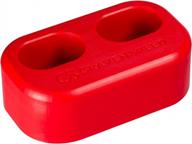
Upgrade Your Mazda MX-5 Miata With CravenSpeed'S USA-Made Door Bushings

39 Review
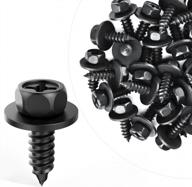
25Pcs Fender Liner Screws For Toyota Avalon Camry Corolla Scion Lexus - OEM #90159-60498

35 Review

Gooacc 50Pcs Hood Insulation Retainer Clips - Perfect Replacement For Grand Cherokee, Dodge Ram, Chrysler PT Cruiser, Plymouth Laser, Neon - OEM Part Number: 4878883AA

33 Review
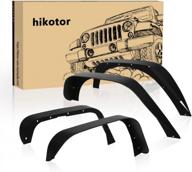
Off-Road Fender Flares For Jeep Wrangler 2007-2018 JK & JKU Unlimited - Heavy Duty Flat Textured Steel Mud Guards In Black (Set Of 4) By Hikotor For Front And Rear Replacement (2 Or 4 Door Options)

47 Review


